Generative AI refers to technology that creates new content, such as text, images, music, and code. It fundamentally differs from traditional AI, which primarily focuses on sorting and analyzing existing data. Generative AI not only produces content but also infuses it with intelligence, providing strategic insights that are readily consumable by leaders.
Table of Contents:
- Introduction
- Pain Points Holding Back the C-Suite in AI Adoption
- What Leading Enterprises Are Doing Right
- Using AI for Scalable Decision-Making
- Top Enterprise Use Cases Delivering Measurable ROI
- How to Measure Generative AI ROI Effectively
- Risk, Governance & Regulation in AI Scaling
- How to Start: Gen AI Rollout Strategy in 3 Phases
- Conclusion: From Artificial to Advantageous AI
AI is no longer confined to innovation labs or proof-of-concepts. It’s embedded in operations, products, and customer experiences across every industry. But for all the excitement, many companies are still struggling to extract real value. Too many AI initiatives start with the tools, not the outcomes. And when that happens, hype overwhelms the impact.
Measuring the Return On Investment (ROI) for artificial intelligence and generative AI projects can be challenging for many organizations. Wagers placed over AI are usually high, given that the scope of incorporating new technologies/capabilities is plentiful, along with assurance of reaping long-term benefits.
Having a clear understanding revolving around Generative AI business impact is not only essential for any CXO for confirming budgets but also for developing a strategic prioritization of AI-based projects on an enterprise level.
Here, we shall be exploring how informed ROI measurement places AI-centric investments as strategic drivers of organizational growth rather than just being experimental ideas/initiatives.
The million-dollar question – Where is the ROI?
As a CXO, you are focusing on making great returns against the investments made. However, there are a couple of simple yet vital steps that should be taken care of.
Focus on aligning your business objectives and the AI-centric initiatives you are planning to undertake. You need to make sure that your business’ pain points, in every aspect, are addressed via this initiative.
Recognize prospects that can lead to high profits through careful assessment in terms of readiness, impact, and feasibility of every project you are planning to incorporate Gen AI.
Chart out the expected ROI prior to giving thumbs-up to a project as this will help you get a clear picture of benefits related to finance and operations, any relevant maintenance costs, and risk factors before making any commitments of higher budgets.
Consider any relevant governance & ethical aspect since AI projects are required to comply with various parameters in terms of privacy and regulations. Failing to adhere to these can deeply impact the project, leading to hampering brand image, hence decreased ROI.
Pain Points Holding Back the C-Suite in AI Adoption
According to a survey conducted by Gartner (an American Research & Advisory Firm), there is a huge gap between expectations of CXOs from AI and the confidence & readiness of their team in implementing it to meet them.
As per the survey, around 44% of CXO are “well-acquainted” with AI. This number clearly indicates the huge gap between the awareness of the top-decision makers in implementing AI and the growing importance of AI.
Why does this matter for us to know about AI? Well, we have employees/staff who know it and can implement the stuff. – many CXOs might come up with this statement.
Who makes the final call – you (CXO) or your employee? – our next question for you.
If you are hesitant to answer it, well, you already know the answer!
The gap between the constantly rising importance of Gen AI and a CXO’s ability to incorporate or stay in sync with ai proves to be an obstruction to the company’s growth. To ensure long-term survival for your business, it is integral to upskill yourself as well as your workforce in AI.
Let’s elaborate on the pain points to have a better understanding of how this ‘lack’ can impact.
Absence of strategic alignment: The major hurdle is ensuring that AI initiatives are directly linked to and support overall business goals and KPIs. Without this alignment, it’s difficult to justify investments and measure the true impact of AI.
Lack of unified roadmap: A cohesive plan that connects AI analytics with tangible ROI is crucial. This roadmap should outline how AI will be implemented, what metrics will be tracked, and how the insights gained will translate into business value.
Regulations of AI: The evolving landscape of AI regulations, coupled with the need for transparent and understandable AI models, poses challenges. C-suite executives need to understand how to navigate these complexities and ensure responsible AI implementation.
Partiality in AI: Partiality in AI systems, stemming from biased training data, can lead to unfair or discriminatory outcomes. Addressing these to ensure fairness in AI applications is a key concern for the C-suite.
These pain points highlight the need for a more strategic approach to AI adoption, where business leaders are actively involved in defining the purpose, implementation, and evaluation of AI initiatives.
What Leading Enterprises Are Doing Right
Well, in continuation of the above point about lack of faith among CXOs in terms of their employees being tech-savvy, or AI savvy to be precise.
According to the same survey conducted by Gartner, it was noticed that approx. 77% of CXOs consider that the AI is ‘THE NEXT BIG THING’. However, the same CXOs claim that even the best technology experts in their organization seem to lack relativeness and knowledge to support or accelerate the business in the growing AI landscape.
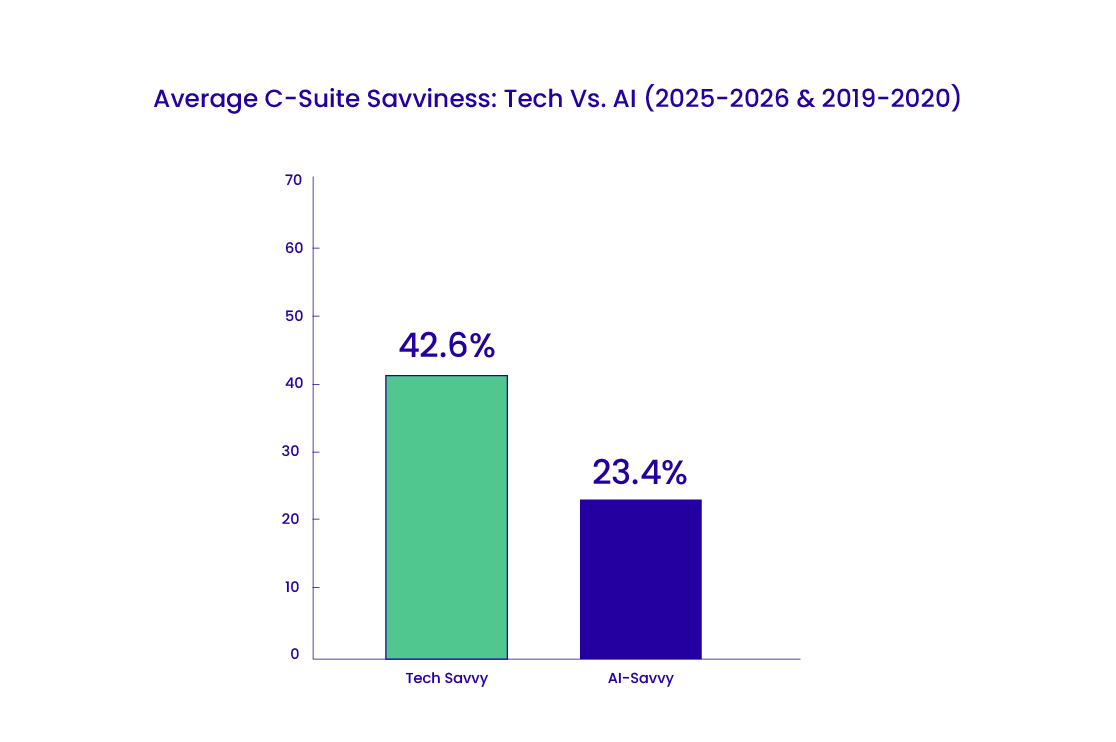
Most of the leading enterprises recognize the strategic vitality of ai for leaders and syncing their investments to accomplish business objectives such as revenue growth, faster rate of operational performance, and better customer experience.
Let’s have a detailed look at these.
Aligning AI with Strategic Goals:
Revenue growth: AI has boosted the growth of revenue by streamlining sales prediction, recognizing opportunities for cross-selling and upselling, customizing marketing campaigns, and even establishing dynamic pricing based on factors like demand and market conditions
Improved customer experience: Enterprises are implementing help for providing faster, better, and proactive responses or interactions with customers. Examples include chatbots and virtual assistants that offer 24×7 support, along with automated responses. Providing customized solutions or sending messages through predictive anticipation of customer needs or any relevant issue that might arise is another way of improving customer experience via AI.
Better rate of operational performance: AI has simplified operations through automation of repetitive tasks to enhance overall operational efficiency, along with providing data-driven insights for strategic planning. Examples include gen ai predicting any possible disruption, simplifying routes, and handling inventory more efficiently. This results in decreased costs and improved delivery times.
Using AI for Scalable Decision-Making
Imagine the scenario when AI was not even in the picture. How long do you think it took for the CXOs to make a simple decision?
Well, it was complex if we wanted to say so. Even before the rise of ai help, the overall decision-making process involved multiple phases, considerations, rework, and considerations (again!!). Since there is a huge amount of data that needs to be analyzed manually, there is a great chance of human error.
So, how does AI boost decision making?
Improved accuracy: With its advanced algorithms to do the job, AI evaluates data with greater accuracy, while eliminating errors for better and quicker decision-making.
Better speed & efficiency: AI automates tasks that are repetitive in nature, keeping human resources free to take part in other strategic activities.
Scalability: AI is designed to handle huge volumes of data and complex calculations, making them ideal for large-scale businesses. Also, AI can be easily adjusted to meet business needs.
Predictive Analytics and insights: One of the most promising things about AI is its ability to identify changes/trends/patterns and predict any changes in future. This allows strategic planning in advance, giving CXOs a competitive advantage.
Cost savings: Another amazing advantage of AI is its potential to reduce costs related to operations and labor while enhancing efficiency.
In essence, AI empowers organizations to make faster, more accurate, and cost-effective decisions at scale, leading to improved efficiency, enhanced customer experiences, and a competitive advantage in today’s dynamic business environment.
Top Enterprise Use Cases Delivering Measurable ROI
JPMorgan Chase – Wealth & Asset Management
JPMorgan’s “Coach AI” is used by over half of their 200,000 employees to retrieve personalized research and anticipate client needs. This enabled advisors to process information up to 95% faster, fueling a 20% rise in gross sales in asset and wealth management, and contributing to an estimated $1.5 billion in cost savings from fraud prevention, operations, and credit decisions.
Wayfair – Catalog Automation
Wayfair automated the enrichment of its vast product catalog using generative AI, enabling product attribute updates five times faster. This accelerated time-to-market and lowered content production costs across thousands of SKUs.
United Wholesale Mortgage – Underwriting Efficiency
U.S. mortgage provider United Wholesale Mortgage doubled underwriter productivity within nine months by integrating generative AI tools like Vertex AI and BigQuery. This led to faster loan closings for 50,000 brokers, boosting customer satisfaction and throughput
Clorox – Marketing & R&D Optimization
Clorox integrated Microsoft Copilot and third-party generative platforms into marketing and R&D operations. Their decentralized AI rollout accelerated visual ad creation, product ideation, and consumer insights—enhancing productivity and enabling more affordable, varied content without layoffs.
Salesforce – Einstein GPT in CRM
Salesforce embedded Einstein GPT across Sales, Service, and Marketing Clouds. Reps complete tasks up to 40% faster; marketers achieve a 28% boost in click-through rates, and CRM adoption spikes due to seamless content generation (emails, chat replies, campaign messaging).
WestRock – GenAI in Internal Audit
Packaging leader WestRock deployed generative AI for internal audit tasks—automating creation of objectives, risk matrices, and programs. This improved consistency, quality, and auditor focus on strategic issues, while reducing manual effort and freeing teams for higher-value work.
How to Measure Generative AI ROI Effectively
Measuring generative ai roi is not as easy as it sounds. To measure ROI of generative ai, it is important to set up clear objectives, monitor performance metrics & costs, evaluate net benefits, and assess the overall results.
Detailed Approach Towards Measuring ROI from Generative AI
The first step towards measuring gen ai roi is preparing an outline of what you wish to accomplish using generative ai. Do you want to increase revenue? Do you want to decrease operational expenses? Are you looking to improve efficiency? Or do you just need to upgrade your customer experience?
Well, for each of these examples, the use of generative ai technology differs. To use gen ai for increasing revenue, CXOs need to identify how it can boost sales, improve customer life value, or create new revenue streams. For reducing operational costs or enhancing efficiency, you need to figure out how can AI speed up the processes and enhance employee productivity. To upgrade customer experience, parameters such as NPS (Net Promoter Score), customer feedback needs to be monitored after incorporating AI-based solutions.
Evaluation of AI development & deployment costs: Keep a track or list of the various investments made for developing an AI model. Set up a foundation prior to incorporating AI to putting a comparison with post-implementation results. Track KPIs on a regular basis and progress over time to evaluate the impact of AI. Use tools to collect data on AI usage, performance, and impact on key metrics.
Risk, Governance & Regulation in AI Scaling
AI scaling requires dynamic risk management, governance, and guidelines for ensuring responsible development and deployment. This includes identification and modification of potent harms, setting clear accountability, and focusing on ethical guidelines and legal frameworks.
Key Areas of Focus:
Risk Management: Recognizing & attending problems related to AI systems such as security concerns, privacy violations, and impact on people (customers, clients, & employees).
Directive: Creating & incorporating various laws & regulations to address the use of AI, attending issues such as data protection and accountability.
Governance: Setting policies & procedures and frameworks for directing development, deployment, and monitoring of AI systems.
There are specific considerations when it comes to addressing the risk & governance in AI scaling:
Data quality: To ensure that the data used for training AI is of high-quality, illustrative, and should not have any biased information or opinion to prevent unfair outcomes.
Transparency: Making AI systems understandable and their decision-making processes transparent to build trust and enable scrutiny.
Accountability: Establishing clear lines of responsibility for AI systems and their outcomes, ensuring that human oversight is in place to prevent harm.
Safety and Security: Implementing robust security measures to protect AI systems from malicious attacks and ensuring their reliable operation.
Social Impact: Assessing and managing the broader effects of AI on society, ensuring positive social, economic, and cultural implications.
In conclusion, successfully scaling AI requires a holistic approach that integrates risk management, governance, and regulation to ensure responsible innovation and minimize potential harm.
How to Start: Gen AI Rollout Strategy in 3 Phases
A three-phased rollout of AI implementation strategy for business leaders typically involves proof of concept, incubation, and deployment phases. These phases help organizations test, refine, and eventually integrate generative AI solutions into their core operations.
Here’s a more detailed breakdown that can assist Gen AI adoption in enterprises:
Phase 1: Proof of Concept (PoC)
Identify whether generative AI can deliver specific benefits as per a given business function. Recognize high priority use cases, perform small experiments, and assess the possibility of scaling the solution. Choose the correct data and features for training, categorizing problems with high potential business value, and starting with clear success criteria.
Phase 2: Incubation
Measure whether generative AI can deliver the required benefits within a restricted environment while incorporating real users and real-time data. Incorporate complexities of the real world, discover the ideal fit within business workflows, and real-time data challenges. Regulate any expectations that were established during the PoC phase, applying live business workflows, and guaranteeing the AI model performs.
Phase 3: Deployment
Accomplish a positive business impact by completely implementing the generative AI solution into the business workflows. Provide some training in a new AI application to staff so that they can get familiar with workflows since they ensure seamless data flow and integration.
Conclusion: From Artificial to Advantageous AI
Generative AI is more than just artificial intelligence. CXOs can consider it as a strategic tool that can drive substantial return on investment for organizations if & when implemented in the correct manner. Rather than considering AI as a separate being, get it implemented into your core business strategies to enhance overall decision-making process & streamline processes.
What is generative ai? – a common answer might be that it is a tool to automate tasks. Gen ai is about developing almost limitless possibilities and their solutions. C-suite leaders must understand how it can be applied to solve their business challenges while identifying any possible opportunity to gain strategic advantage over competitors.
Key takeaway for CXOs
The true worth of AI is derived from its potential for generating real business results. C-suite leaders need to define clear goals, evaluate their progress, and confirm that the Gen AI initiatives are perfectly in sync with overall business objectives to maximize ROI.
To realize the full potential of AI, businesses must develop a culture revolving around learning and adaptation. C-suite leaders should invest in providing relevant training, setting up clear governance systems, and preparing an environment where AI can thrive.
As AI becomes increasingly advanced, it is important to address all ethical implications and ensure responsible development and deployment. By developing & implementing a strategic approach to generative AI, c-suite leaders can accomplish their transformative potential while gaining a competitive edge in the evolving landscape.
FAQ
What is Generative AI ROI in Enterprise? Generative AI ROI in enterprise refers to the tangible business value derived from implementing generative AI solutions across functions. This includes reduced operational costs through automation, increased revenue via hyper-personalized experiences, and accelerated time-to-market content, prototypes, and decisions. Enterprises measure ROI through productivity gains, lower customer acquisition costs, enhanced customer lifetime value, and faster innovation cycles.
How Do I Use AI for Finance and Operations? AI enhances finance and operations by automating forecasting, improving cash flow visibility, and optimizing procurement and supply chain logistics. It enables faster, data-driven decisions by identifying spending patterns, predicting demand, and flagging anomalies or fraud in real time. From invoice processing to strategic planning, AI tools streamline workflows, reduce manual errors, and improve operational efficiency.
What Are Some Generative AI Examples in Marketing? In marketing, generative AI powers tools that create ad copy, email campaigns, product descriptions, and even visual creatives. It allows businesses to scale personalized content creation across customer segments and regions. AI also enhances A/B testing, chatbots, and customer journey mapping, resulting in higher engagement, conversion rates, and faster content delivery across channels.
How to Navigate AI Regulations in Business? Navigating AI regulations requires staying informed on global and regional policies such as the EU AI Act, the U.S. AI executive orders, and India’s DPDP Act. Enterprises should establish robust AI governance frameworks, perform regular risk and compliance assessments, and ensure transparency in model behavior. Collaborating with legal, data privacy, and compliance teams is crucial for responsible and ethical AI deployment.
What Are the Best AI Tools for Business Leaders? Business leaders benefit from AI tools like Microsoft Copilot for productivity, ChatGPT for strategic ideation, Tableau with Einstein AI for smart data analytics, and Jasper for content automation. Platforms like Snowflake Cortex and DataRobot offer enterprise-grade predictive insights, while UiPath drives operational automation. Choosing tools that integrate seamlessly with existing workflows ensures faster adoption and higher ROI.











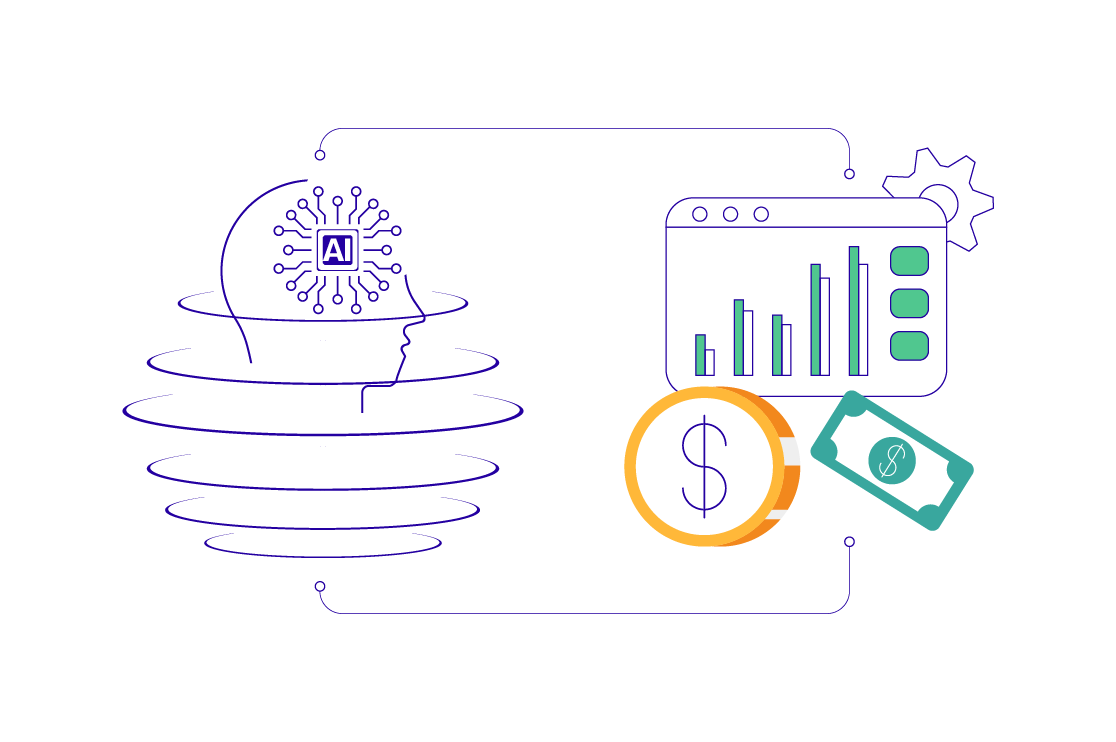
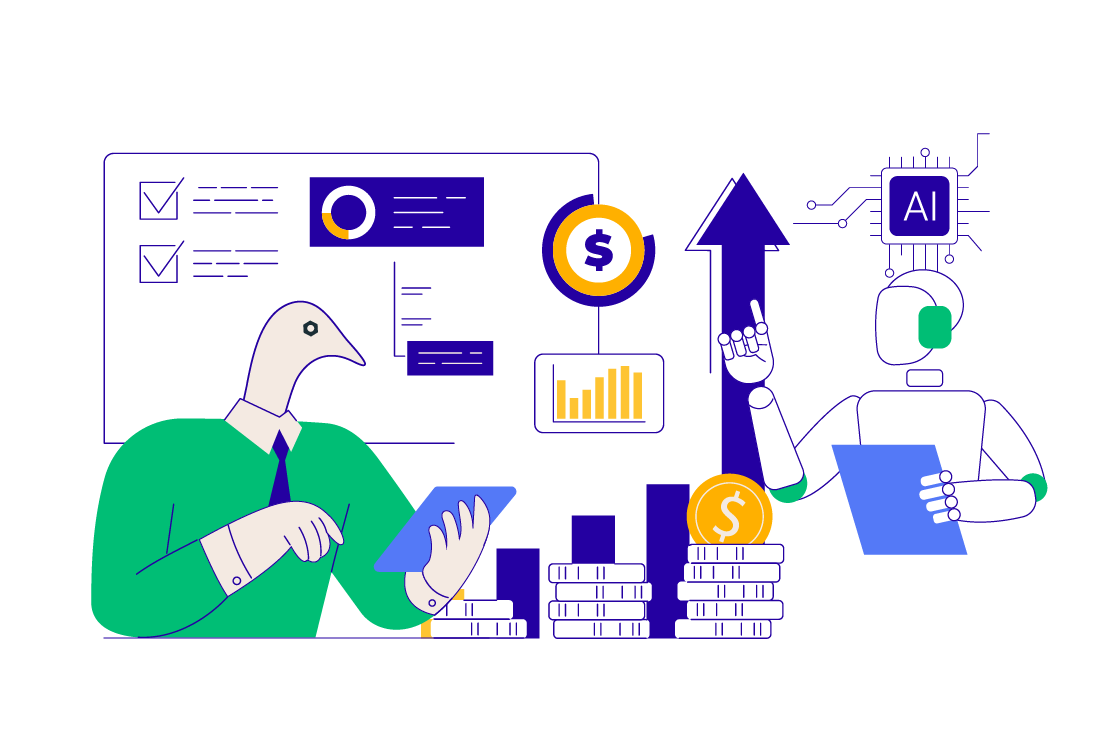 AI Algorithms for Business Decisions: How They Deliver Real Value & Growth for CXOs
AI Algorithms for Business Decisions: How They Deliver Real Value & Growth for CXOs 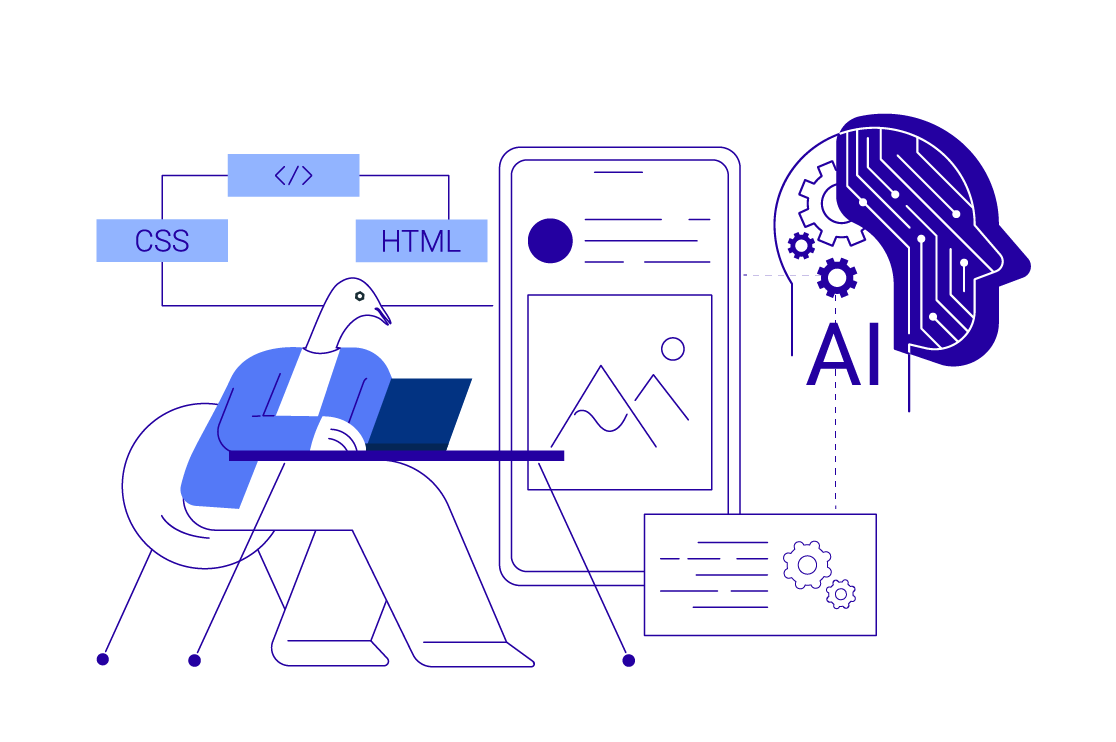 AI in Programming: Disruption, Evolution, and CXO Strategy
AI in Programming: Disruption, Evolution, and CXO Strategy 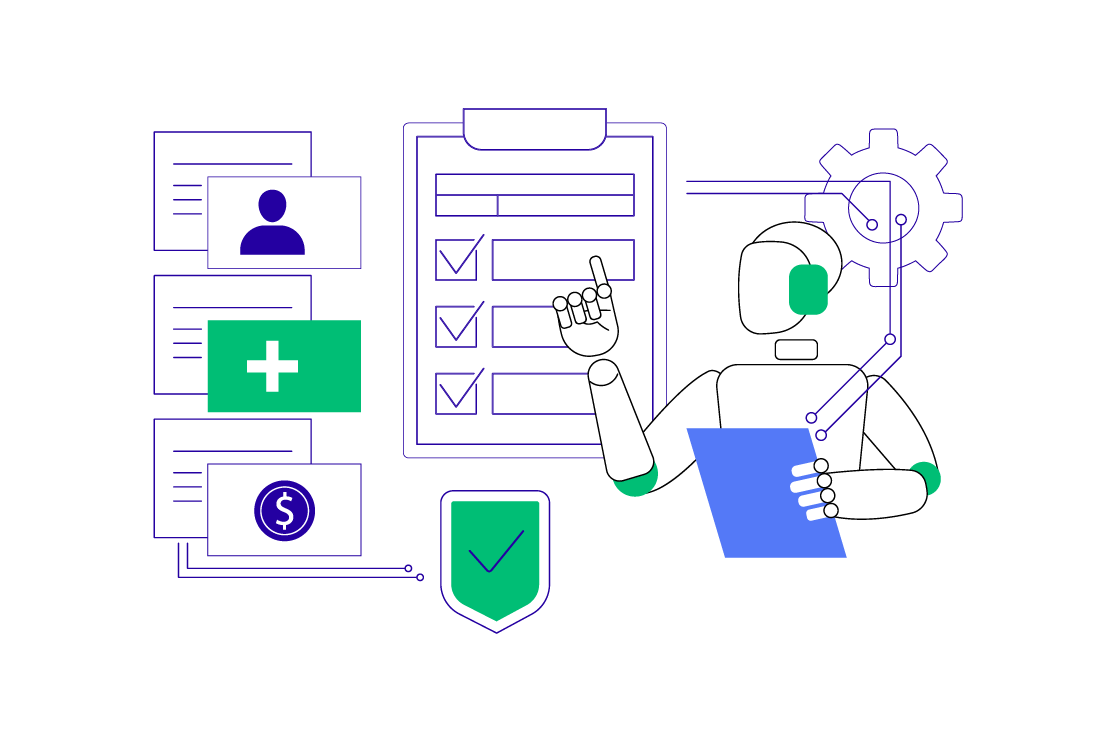 AI in Healthcare Administration: Cutting Costs & Boosting Efficiency
AI in Healthcare Administration: Cutting Costs & Boosting Efficiency 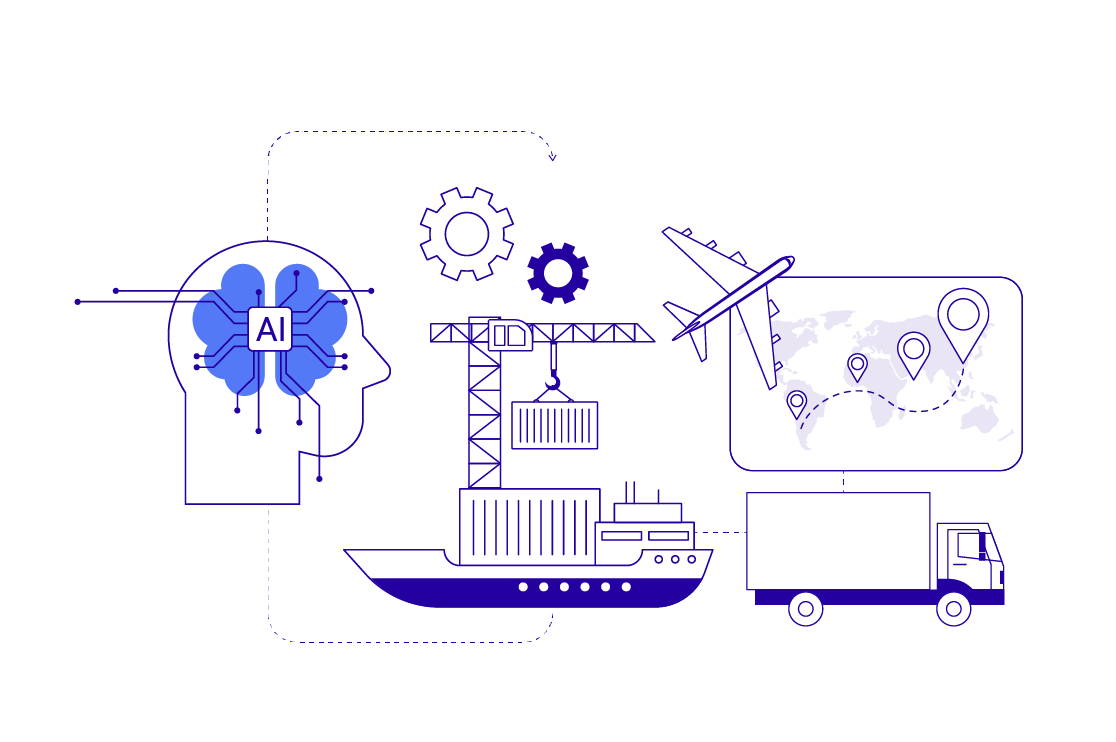 AI for Supply Chain Resilience & Optimization: Strategies for 2025 and Beyond
AI for Supply Chain Resilience & Optimization: Strategies for 2025 and Beyond 
